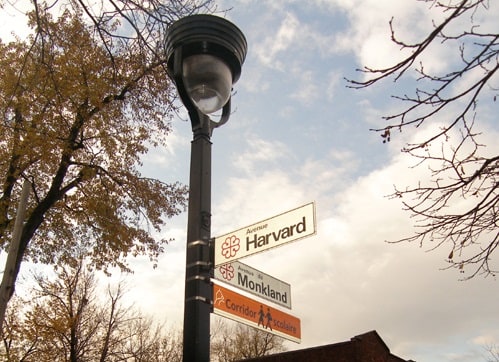Toponymy in practice
When deciding what name to give a new street, park or building, or to change the name of an existing place according to best practices, criteria are respected and a process is followed. Learn about the steps leading to the adoption of a place name.
How is a place name selected?
When a proposal is received, it is analyzed and if deemed acceptable a file is submitted to the city’s Comité de toponymie for a recommendation. Next, the boroughs and municipal departments involved are consulted.
If at all possible, the family and associates of the person whose name is suggested for a place name are informed before any recommendation is submitted to the decision-makers.
Montréal’s city council makes the final decision by adopting a resolution. This resolution is submitted to the Commission de toponymie du Québec, which oversees official acceptance of new place names throughout the province.
Rules for place naming
Several elements are examined when choosing the right name for the right place:
- Type of place: road, park, public square or building
- Qualities of the place to be named: its use, geographic location and context, whether residential, commercial, industrial or cultural
- The urban and social history of the district
- Existing place names: in order to avoid duplication of names and to ensure new names harmonize with the area’s toponymic history.
- The biographical profile of the person being commemorated
- The significance of certain events and their social impact
- The natural association between the person or community involved and the place to be named
- The city’s overall orientations with regard to public security, cultural contributions, and the better representation of women and cultural communities in place naming.
Exclusions:
- Living persons
- Those who died less than one year previously
- People whose prominence is related to personal drama or tragic events whose repercussions are essentially at a family or personal level
- A name likely to provoke or increase public dissension
- One that can be seen as advertising
Standards and rules of writing
Writing rules are respected. For example, the use of hyphens, inclusion of articles and prepositions, capitalization, and translation rules must follow French-language standards. You can learn more about selection criteria, processes, standards and rules on the website of the Commission de toponymie du Québec (in French).
Composition of street names
Street names are comprised of two parts:
Generic
The part of the place name that provides a general identification. The terms “avenue”, “boulevard”, “rue” and “parc” are examples of the generic part of the name. They are not translated into English.
Specific
The individual name for the place. For example, Sherbrooke in “Rue Sherbrooke”, Saint-Joseph in “Boulevard Saint-Joseph”, Curotte in “Avenue Curotte”.
Quick search
Need help?
Contact us if you have questions.
Are you sure you want to leave this page?
This page is not available in English. You will be redirected to the English home page.
